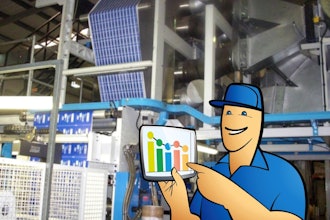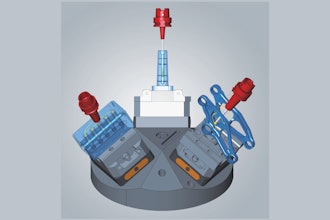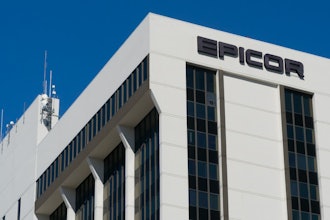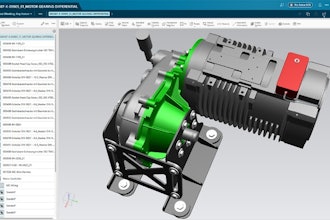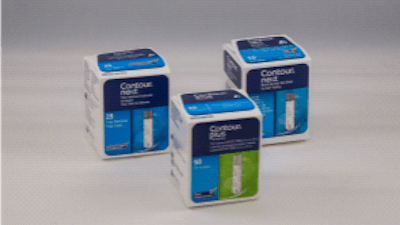
Complexity, precision and regulation are watchwords in the medical device world—ones that apply to both the product itself and the business that runs behind it. When a company with a new name is formed out of a leading brand, transferring and integrating the huge amount of data involved can be a significant challenge. But the exercise can also provide an opportunity to upgrade information management systems in ways that make future product- and business-decision-making more effective.
Such was the experience of Ascensia Diabetes Care, created when Bayer AG sold its 70-year-old diabetes care business to PHC Holdings (formerly known as Panasonic Healthcare Holdings) in 2016. Ascensia is now a standalone company whose products include the widely used CONTOUR™ range of blood-glucose monitoring systems.
Managing “Old” into “New” on a Global Scale
The excitement was tempered by the need to come completely off Bayer’s existing SAP enterprise resource planning (ERP) software system. All relevant legacy data had to be extracted by a certain deadline. New ERP and product lifecycle management (PLM) systems needed to be configured and integrated with each other. And everything required a rebranding from “Bayer” to “Ascensia” that would affect multiple products, sold in countries around the world, with customized packaging in many different languages.
“We had both legal and time constraints on getting it done in about 18 months,” said Pasternak.
For some idea of the groundwork involved, consider a single Ascensia blood-glucose monitor: the compact, hand-held device comes individually packaged and is shipped in large lots. Accompanying supplies include the lancets for the finger-stick that draws the patient’s blood and the test strips that go into the meter to register blood-sugar levels.
Once Ascensia was created, the company had to start the process to replace all existing blood-glucose monitors and associated hardware that included the Bayer name and branding with versions bearing the new company logo, as well as redesign artwork, labeling and packaging. Designs, marketing plans, manufacturing guidelines—all needed to be created, approved and executed, and this work needed to be completed by the end of the transition period that was the agreed deadline for removing all Bayer branding. “Every component that went into every country had to be touched,” says Pasternak.
“Even the needles on our lancets had to be redesigned because they all had the Bayer cross emblem on them,” he says. “Back when we were Bayer we wanted to make sure that brand was on everything—but in this new situation it had to come off everything.”
To manage it all from both a product and a financial-system standpoint, Ascensia would have to process a massive number of change orders to track all the redesign work, produce and distribute all the new product versions to their proper destinations, and keep the overall task flow of the business running smoothly throughout.
What’s more, as a medical device manufacturer, Ascensia had to ensure continual compliance with strict FDA and ISO requirements as all these transformations unfolded during the transition period. “Everything we do, from changing passwords to how we control and store our data is regulated,” says Pasternak. “We have to provide proof that we are following very detailed processes.”
For tools to help manage a project of such scope, Ascensia turned to Capgemini, a global consulting, technology services and digital transformation firm. Capgemini recommended the NetSuite cloud-based software-as-a-service (SaaS) ERP system with particular focus on the business applications of supply-chain management and procurement. Capgemini also provided customer relationship management (CRM) software.
PLM software was recommended as well—something the Ascensia team had not been using when they were Bayer—to serve as the system of record for everything involved in managing the development, production and assembly of its products. Ascensia considered four different tools and decided on Autodesk’s cloud-based Fusion Lifecycle. “Fusion Lifecycle just stood out to us from both a price point and a feature point,” says Pasternak, “most notably for its strengths in bill-of-materials (BoM) and change management.”
After one Fusion Lifecycle provider stepped away from the project several months in, due to the size and complexity of the challenge, both Capgemini and Autodesk recommended the implementation-services provider Razorleaf to support configuration and integration of the PLM system.
Ascensia, Capgemini and Razorleaf combined forces, working closely together on the transition over the next year. “Despite the late start and the size of the project, Razorleaf and Capgemini helped us handle it all, within regulatory obligations, and we were done ahead of schedule,” says Pasternak
Keeping the Legacy Intact
Pasternak makes it all sound easy, but an inside look at the many steps taken to ensure the project’s success provides a more realistic view of the massive scope of the task—and also a clear demonstration of how the latest advanced data management tools are delivering on a longstanding promise of fully supporting enterprise-wide communication and collaboration.
“It was clear from the beginning that the biggest thing we had to tackle was that we had a lot of data, and it wasn’t going into the same box,” begins Pasternak. “We weren’t going from SAP to SAP, so A didn’t equal A. We were trying to manipulate our data into a completely different system, and at the same time do system upgrades to change certain things we wanted to do in other ways. But we also wanted to keep some familiarity in our process so we didn’t totally lose our people; we still wanted to be able to find all the previous information that we brought in.”
Notes Capgemini work stream project manager Janie Gurley, “A key piece was that legacy information; we needed to take decades of information out of SAP at Bayer and it was a huge win to be able to migrate all that information over into Ascensia’s current environment instead of setting it aside.”
With the ERP and CRM portions of the project already underway, Razorleaf moved quickly to launch the PLM system configuration.
A series of strategic meetings were held to assess the scope of the challenges and come up with a master plan. “Ascensia had done an excellent job collecting their requirements,” says Rodney Coffey, Razorleaf’s project manager and solution architect. “We reviewed and vetted these to see if they could be met with standard configuration, more complex automation, or customized development to accommodate functionality gaps. There were few gaps, so we were for the most part able to jump right in. However, it was clear from the very beginning that there would be hurdles creating all the necessary documentation for FDA compliance."
Razorleaf gave a global-design presentation to Ascensia to provide everyone with an understanding of the PLM solution being put in place and all the steps towards integration and full implementation. “We used our iterative design approach that keeps the customer in front of the solution as it is being developed,” says Coffey. “This helps control scope and ensures they are getting exactly what they want.” Razorleaf started the PLM configuration, “knocking out” each application one-by-one while keeping the bigger picture of full functionality in view.
“In parallel we had team members working to create the needed FDA compliant Specifications and Test Protocols for each of the business applications,” says Coffey. “Ascensia also had the responsibility of creating their own new Standard Operating Procedures for the end users of the system.” The PLM portion of the project came back on schedule relative to the ERP and CRM implementations, ready for integration with NetSuite and the data migration from Bayer’s legacy SAP system.
For the integration, Razorleaf developed the specification that laid out all the necessary field mappings and business processes. An integration software, Mulesoft (since then acquired by Salesforce), was used to transfer data between the PLM and ERP systems. “Seamless integration between the two optimizes communication between the engineering and the purchasing groups,” says Coffey. “We handled all Fusion Lifecycle endpoint connections and functionality and assisted on the NetSuite endpoint-connection development through to Integration UAT [User Acceptance Testing].”
Mastering Data Migration
After the extraction from SAP was completed by a dedicated Ascensia/Capgemini/Bayer team, Razorleaf worked to transform the raw data for loading into Fusion Lifecycle. “This was a large, cumbersome effort but one that was necessary to create the new PLM environment,” says Coffey.
It took about four months to migrate all revision of Items and BoMs, Legacy Change Orders, Specifications with Attachments—and then generate the needed relationships between these records in the Fusion Lifecycle system. “During this process Ascensia was critical to our success,” Coffey notes. “They handled all the validation and were a fluid part of the migration effort.”
“With Razorleaf’s help we were able to meet everything we needed to do, bring things over and find it all afterwards,” says Pasternak. “We actually created two different engineering change order (ECO) types—one’s legacy, one’s the new one in Fusion Lifecycle. So we can look up anything that was legacy and still see all the text. We have governing requirements that data has to be there for seven to ten years, and in fact we’ll probably hang onto it forever. But going forward we have a different workspace for all our future ECOs.”
With the migration complete, the PLM environment reached a production-ready point and Ascensia was able to begin end-user training (Razorleaf trained three Ascensia staff to be trainers) and start coordinating new change orders in the system. “Razorleaf stayed engaged with support and adoption activities,” says Coffey, “but Ascensia did a great job taking the ball from the end of migration and running with adoption.”
Enhancements to the software can now be managed internally, says Pasternak. “We continue to make small changes that make people’s lives easier. We’ve even built our Fusion Lifecycle system to track changes to our Fusion Lifecycle system!”
Improved business metrics became apparent very quickly: “In the first two months of the new system we were able to put out about twenty percent more ECOs and our cycle times were reduced by close to twenty percent as well,” says Pasternak. “By processing ECOs faster we can get to market quicker. We’ve now wrapped up our rebranding efforts and are moving onto our next project.”
Things are running more smoothly on many other levels as well. “The learning curve for staff is much less steep and a lot of that is due to the way Fusion Lifecycle works,” he notes. “Things are more on the surface so you don’t have to dig through ten different areas to find what you need. Our coordinators love using it and novice users don’t need to ask for help every time; once we show them how to set up the filters they can find whatever they need in two or three mouse clicks without having to call for help.”
Reporting is also vastly improved with the new PLM system. “Before, we’d spend a day building an Excel spreadsheet that was nearly out of date by the time we published it the next day,” says Pasternak. “Now we can build and publish an intricate report quickly and whoever needs the information can grab all the real-time data immediately.”
Having the entire system web-enabled on the cloud (protected by Autodesk’s dedicated, secure portal) is another benefit Pasternak enjoys. “I can access it from anywhere, collaborate with colleagues while travelling, and if anything crashes that’s system-based, Autodesk fixes it quickly, remotely.”
Of course the FDA is never far from any medical-device manufacturer’s mind and Ascensia is no exception. “We are very well regulated, whether it be the FDA here in the U.S. or other regulatory governing bodies in different countries,” says Pasternak. “The new system allows us to prove we’re adhering to all of our process requirements and maintain the tight compliance we need.”












